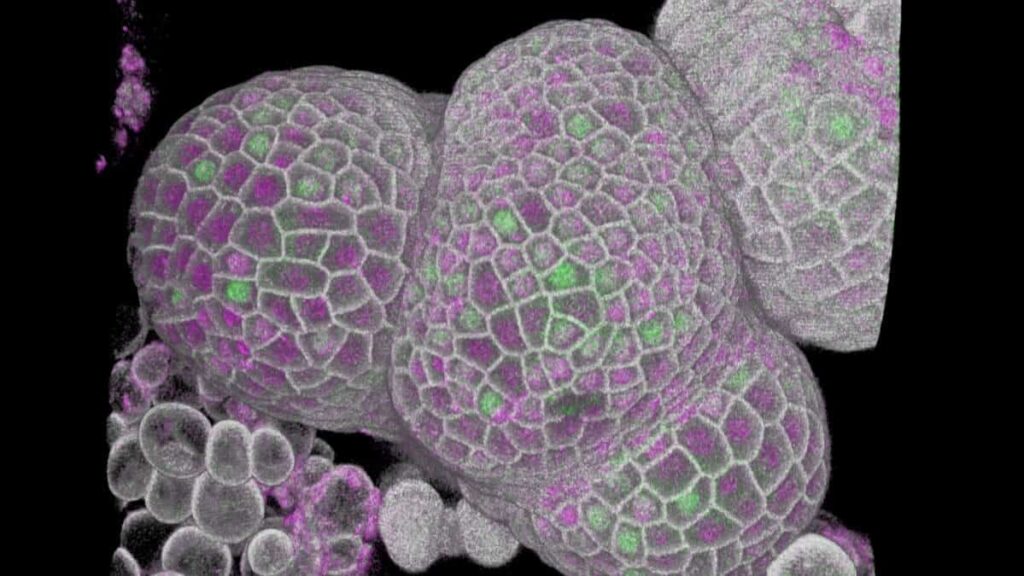Scientists unlock the key to cell size regulation – and it’s all in the DNA.
How do cells regulate their size? UK researchers have answered this long-standing question in biology. Turns out, they use their DNA content as an internal scale to check how big they are.
Use this explainer resource to investigate how cells regulate their size. This resource is best suited to Year 8 and 10 Biology students looking for applications of learning about cells and their features.
A short video is included to help with explanations.
Word count / Video Length: 512 / 1:22 mins

Cells are the building blocks of life, and like life itself they come in all shapes and sizes. Most eukaryotic cells range between one and 100 micrometres, while neurons, for example, are thin cells that reach up to several centimetres long. Eggs are actually single cells – ostrich eggs are the biggest of all, spanning up to 13 centimetres in diameter.
Each type of cell has a characteristic size that it reaches before it divides into two daughter cells to reproduce. Biologists have long wondered how cells know when they have reached this threshold.
In a new study published in Science, researchers from the John Innes Centre in the UK set out to answer the question of “how do cells regulate their size?” by looking at the growing tips of plants, where new meristem cells are created to make leaves, flowers and stems.
Following the growth and division of these cells over time, the team found that although cells might start life with different sizes, they all reached a consistent size by the time they were ready to replicate their DNA and split into two.

Delving deeper, the researchers found that regardless of initial size, each cell is born with the same amount of the KRP4 protein. This protein’s role is to delay the start of DNA replication. This means that if a cell is born too small, the protein will delay the DNA replication for longer and give the cell time to catch up and grow to the right size – and vice versa for cells born too big.
To make sure every cell starts off with the same amount of KRP4, this protein hitches a ride on the DNA when a cell splits into two, and any excess KRP4 not bound to the DNA is destroyed by another protein called FBL17. This means the identical newborn cells inherit equal amounts of KRP4.
“It has been suggested for a long time that DNA could be used as a scale for cell size, but it was unclear how cells could read the scale and use the information,” explains co-author of the study, Robert Sablowski.
How, he asks, can a cell know how much it has grown when most of its components increase at the same rate, so can’t be as a fixed comparison?
“One exception is DNA, which exists in the cell in a discrete amount – its amount precisely doubles before cell division, but it does not vary with cell growth,” Sablowski explains.
How do cells regulate their size? “The key is to use the DNA as a template to accumulate the right amount of a protein, which then needs to be diluted before the cell divides. It’s exciting to come across such a simple solution to a long-standing problem.”
Watch the explainer video below:
Log in or Sign up for FREE to download a copy of the full teacher resource.





